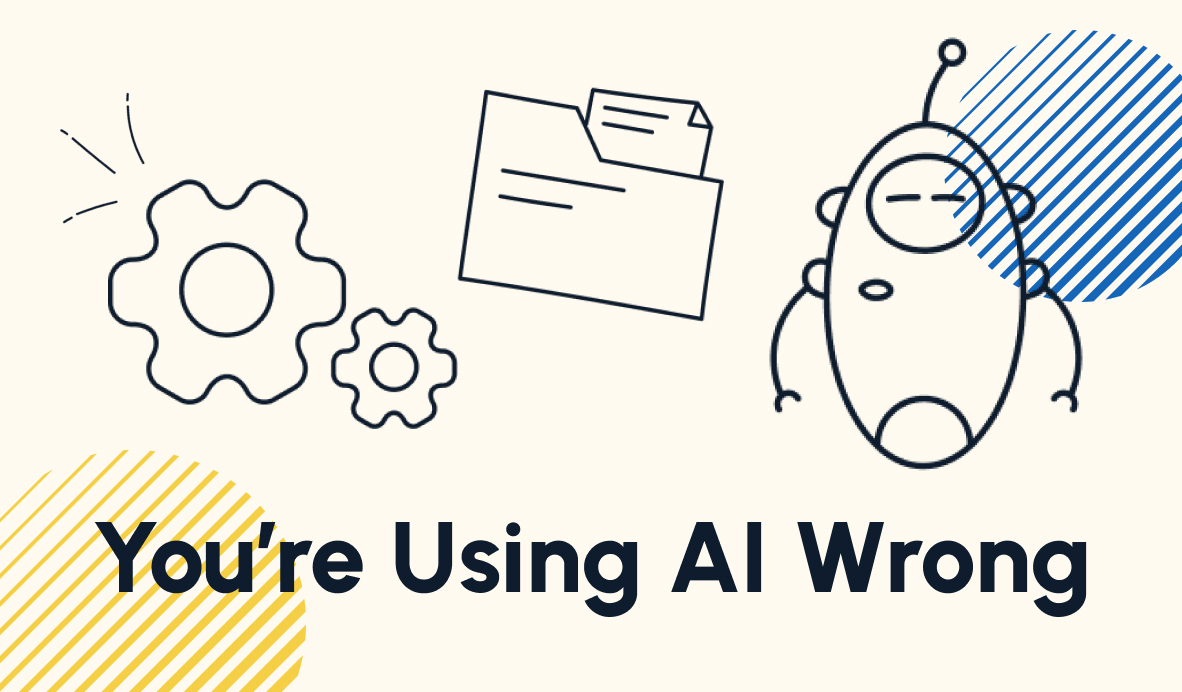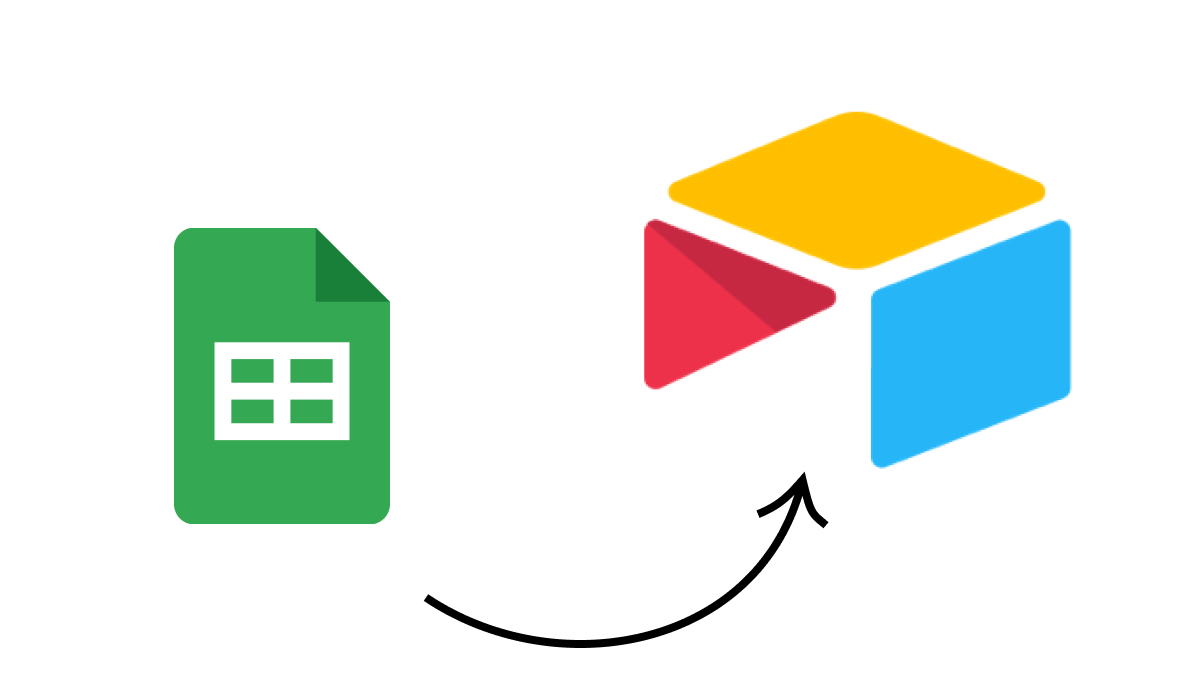Moving From Siloed Data to Seamless Workflows
Discover the emerging role of a workflow designer and how it will revolutionize business operations in the coming years. In this post, we’ll explain how workflow design can eliminate siloed data, simplify workflows with no-code tools, and empower teams to focus on strategic work. Find out how to leverage workflow design today and optimize your processes for greater efficiency and scalability.
May 24, 2023

Have you ever heard of a workflow designer? Chances are, you probably haven’t yet. It’s a role that’s only beginning to emerge right now.
But over the next few years, it’s going to become extremely important for any business that wants to leverage the latest technology and get the most out of their software.
In this post, we’re going to explain what a workflow designer is, and why workflow design will become a critical discipline for every industry in the coming years.
Operations managers: precursors to Workflow design
First, let’s address the circumstances that have built up to the rise of the workflow designer, and the circumstances that many companies are dealing with right now.
While you probably aren’t familiar with any workflow designers yet, you likely are familiar with some operations managers who work in specific departments.
For instance, your company may have people on your team working in sales operations, marketing operations, finance operations, or even no-code ops.
These roles have emerged as talented salespeople or marketers switch their focus to helping others in their department determine the best way to get their work done.
Operations managers help their team to establish consistent, reliable processes that achieve the results the business is looking for. But even with great operations managers, companies often continue to face the problem of siloed data.
Struggling with siloed data
At many companies, each department will frequently struggle to get the data they need to truly make informed decisions.
Sharing data across teams is a critical issue, since many processes are not confined to a single department. For instance, simply engaging with a new lead will involve efforts from marketing, sales, finance, and your product team.
In many cases, your finance ops manager can’t always get the data they need from the other departments.
A handoff between the sales team and finance department is a great example of how the specific price and package purchased might get lost in communication. And they won’t always be able to share the data that they create with the rest of the team either.
Since Salesforce licenses are so expensive, you might not want to pay for your accounting team to have access to the deal pipeline.
This forces you to move the data out of Salesforce so your accounts team can access it.
Most often, this data transfer is handled through messages, emails, or conversations between team members in different departments.
Without a well-designed workflow in place, you’re likely going to see lots of manual work in exporting and processing that data as it gets handed off from one department and their software to another department and their different software.
A chief operations officer or a general operations manager can try and create systems to bring together data from every department, but this can be difficult when every team is relying on different apps and the COO or Ops Manager may not be familiar with most of them.
They could potentially consult with IT or engineering, but we all know how overburdened tech teams usually are. Grabbing more of their time for internal operations tends not to be a great use of your resources.
This is where a workflow designer comes in.
What workflow designers do
A workflow designer designs and implements better ways to work using automation, AI, and other no-code tools.
They find ways to connect and improve the software your company already uses, and find ways to streamline the way that your team works.
Designing the way you spend your time at work
A workflow designer’s main responsibility is to optimize your time.
Much of modern app development is focused on maximizing the amount of time that you spend in that app. To that end, popular SaaS tools have been introducing all sorts of add-ons and new features that go beyond the original core functionality of the app.
For instance, this is why you’ve seen Zoom add email and calendar, while Google Calendar adds Hangouts to each meeting by default. The lines are getting blurrier and blurrier between application feature sets.
Just consider how many different ways you and your team take notes. Nearly every app used in the workplace wants to offer meetings, and chat, and notes, and more, so that you stay in their ecosystem from 9 to 5.
Workflow designers are uniquely positioned to push back against all of the apps that want to eat up your time and attention.
With no-code automation and AI software becoming more prevalent and more accessible every day, workflow designers now have the tools they need to build systems that connect every department in an organization.
Using strategies like no-code automation, Workflow designers can help you to leverage the most useful pieces of each app while minimizing the amount of time you have to spend in each one.
Simplifying your workflows with no-code tools
In many cases, a workflow designer can refine your business process so you just have to fill out a form or click a button, prompting an automation to move your data through every relevant app in the background.
With less time devoted to menial tasks, you and your team can direct your attention to where it has the greatest impact: on creative, analytical, strategic, and thoughtful work.
Well-designed workflows will improve the employee experience for everyone at your company.
Without getting bogged down in tedious, repetitive tasks, your team can focus more on the work that actually requires their unique skills and insight.
And with the consistency created by standardized and automated workflows, your team will be more confident in their work than ever.
Perhaps most importantly of all, a workflow designer will enable you to spend more of your time on making key decisions, and less time on the execution of your decisions.
Spend more time making decisions and less time processing data
Fundamentally, a workflow designer is someone who increases your capacity to make decisions. After all, you can only make so many decisions in a day, because it takes time to gather the data and implement your ideas.
A workflow designer will analyze the way you’re working now, and find ways to get the right information faster.They’ll also make sure the data you get is accurate, and consistently formatted so you can actually trust your source of truth.
With better data delivered to you in less time, you’ll have more time every day to make critical decisions.
Going beyond workflow automation
But workflow design is not just about automation. Connecting tools together to automate tedious, repetitive work is a big part of implementing a workflow designer’s insights, but it’s certainly not their only approach.
Ultimately, a key part of a workflow designer’s job is to understand every facet of your company’s processes. By understanding how work gets done now, they can discover opportunities to improve your processes without getting rid of everything that already works great.
And critically, it’s important not to skip the step of asking why you would build the automation, and if you should build it in the first place.
In many cases, you can optimize your workflows by simply reorganizing your data in Airtable, Notion, or whatever app you’re using.
In other cases, simply documenting a standard process to follow will help your team to be more efficient.
And with AI becoming more sophisticated and more accessible every day, the best solution is often to just send a quick prompt to ChatGPT.
A good workflow designer will never jump straight to building a complex automation when a simpler solution is a better fit.
Retaining control over your automated workflows
Even when a workflow designer decides to implement an automation, they can still ensure that your team retains critical oversight over the entire process, with the ability to confirm automated work at key moments.
For instance, they might build a workflow that sends automated responses to your inbound leads.
Instead of just sending that automated response right away, the workflow designer might ensure that your team can check the message first, and edit it if needed.
That way, you can be confident that you’re always sending your leads contextually appropriate responses, while still drastically reducing the amount of time you have to spend drafting personalized responses for similar inquiries.
Regardless of the specific strategies and systems they implement, a workflow designer understands that your most valuable resource is the people at your company.
Their time and their attention are limited.
Designing better workflows that save time and get more reliable results will let you get the most out of your team’s time. This will enable you to scale your processes by removing the bottlenecks that limit your capacity.
How to start leveraging workflow design today
Workflow design is quickly emerging as an important discipline for any industry. But how can you start leveraging the benefits of workflow design today?
To get started, you can always check out the posts on our blog. We’ve published lots of tutorials and deep dives to help you think like a workflow designer and give you the tools and knowledge you need to optimize workflows for yourself and for your team.
Our tutorials are often focused on the nuts and bolts of automation, but our upcoming workflow design course will take a more holistic approach to workflow design. We’ll share our own strategies for analyzing a workflow, discovering the best opportunities for optimization, and implementing critical improvements.
This course won’t just help you to streamline your own day-to-day work; it will show you methods you can use to improve workflows for your entire team.
If you and your team aren’t looking to take on the additional responsibilities of being workflow designers yourselves, you can always reach out to XRay instead.
Our workflow consultants will help you to uncover areas to improve in your workflows, and build the automations, AI tools, and other resources you need to streamline your processes.
Just click on “Contact” to schedule a 15-minute discovery meeting, or explore our site to learn more about what we do.
Putting more focus on how we work
Far too often, we put too much focus on slogging through our work, and we don’t stop to reflect on how and why we do what we do. Workflow designers can help to answer these key questions, create more scalable processes, and improve your employee’s experience at your workplace.
If you’d like to learn more about workflow design and automation, be sure check out our blog or our YouTube channel. You can also follow XRay on Twitter, Facebook, or LinkedIn.















